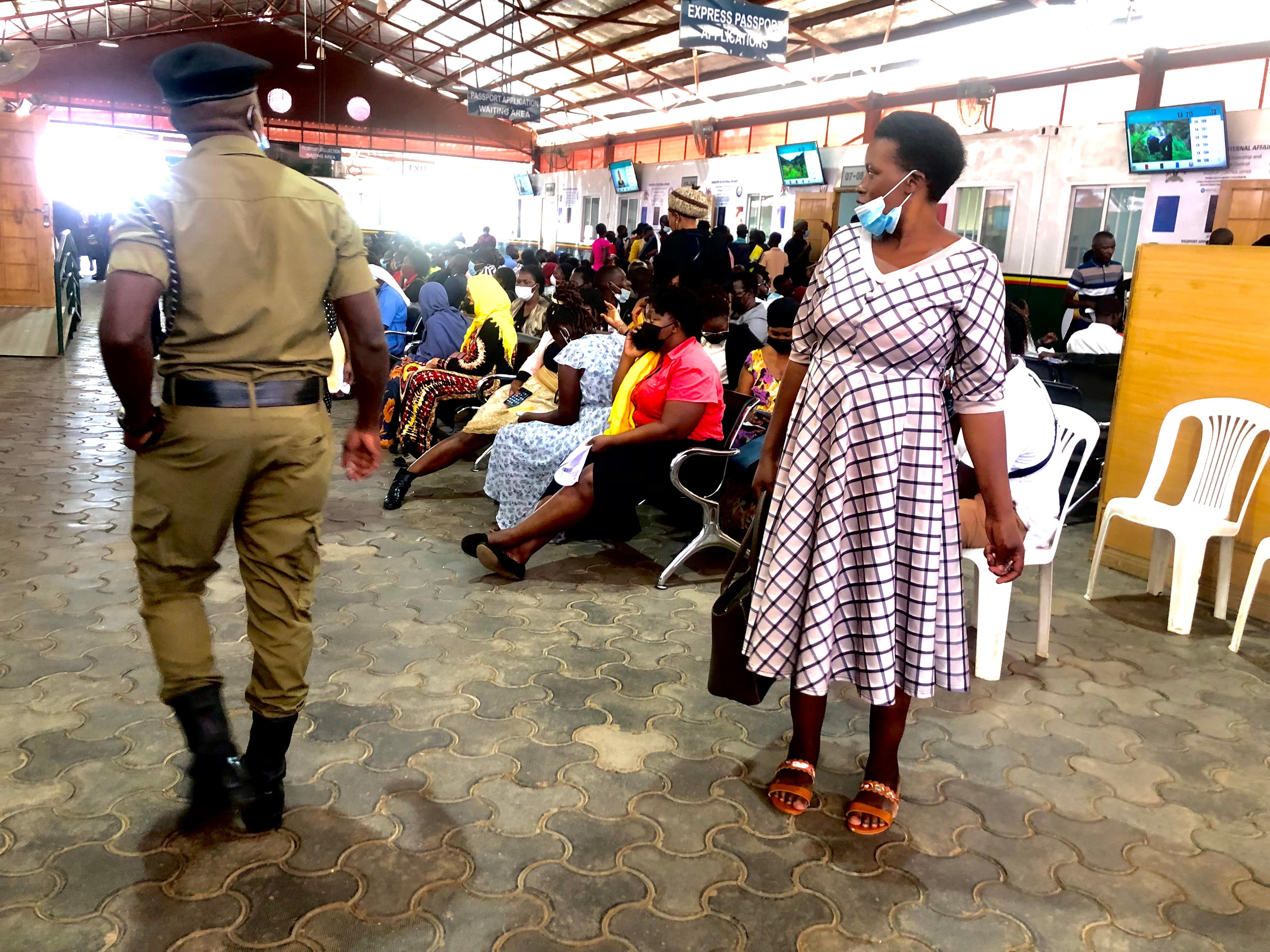Failings at passport office; speak to deeper problem

Applicants wait to receive their passports at the Immigration offices in Kampala on March 22. PHOTO/ ISAAC KASAMANI.
What you need to know:
- The issue: Crisis at the passport office
- Our view: The motives of those who choose to address this problem with a 20th century mindset can be examined and must be criticised.
The start of this workweek brought with it a significant date for Uganda’s Directorate of Citizenship and Immigration Control (DCIC). The DCIC had made it distressingly clear that April 4, 2022 was cast in stone as the deadline for phasing out Machine-Readable Passports (MRP).
When foot traffic at the passport collection centre in Kyambogo, Kampala, increased, the directorate found itself sucked into a morass. This climaxed with the issuance of a humiliating climbdown as opposed to biometric passports.
The crisis—its roots and response—is a microcosm of what ails Uganda. The DCIC’s response to the backlog of passport applications waiting to be processed has been akin to sticking plaster to deal with a broken system. The directorate has moved to increase working time in its workweek. It also plans to, revealed Simon Mundeyi—the Internal Affairs ministry spokesperson, “increase our work stations going forward.”
We, however, believe that a pertinent question to ask is: how did we get to such an embarrassing spectacle? Replacing the directorate’s legacy systems and upgrading its main passport database was supposed to provide the foundation for wider modernisation. Ugandans were told that this solutions-focused reinvention would guarantee agility.
With operations streamlined, the customer experience was supposed to be improved by way of increasing efficiency, managing costs, and amplifying security. Instead, the fast-track service for urgent applications now moves at a worse pace.
We believe digital transformation is vital. This explains why we unreservedly supported plans to introduce a new online passport application service. A curious failure to piggyback on existing civil registration systems, however, boggles the mind. It has effectively ensured that the DCIC collapses under the weight of its own contradictions.
Since national identity cards have digitally-embedded information, the DCIC should move to see how the National Identification Number (Nin) can be put to use. Conventional wisdom suggests that a Nin can help cut out superfluous (purely on account of being repetitive) processes while one is renewing their passport. If it is agility we are after, why should—for instance—an applicant seeking to renew their passport be compelled to produce a recommendation letter?
A leaf can be borrowed from the Uganda Driver Licensing System (UDLS). An offshoot of the Transport and Works ministry, the UDLS has embraced ‘cross-pollination’ at the pace and scale that is crucial in order to thrive.
The DCIC, conversely, fares deplorably when it comes to crowd control. So many people show up at its issuance centre, and go through unimaginable horrors to get to the front of the queue. The DCIC says it has made good on using new technology to replace its ageing systems. If applicants are invited by SMS, how come more than can be served are called?
The inner workings of the directorate are impossible to scrutinise. The motives of those who choose to address this problem with a 20th century mindset can be examined and must be criticised.


